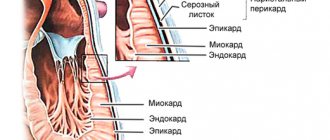Live broadcasts on Instagram every Sunday at 12:00
Subscribe so you don't miss out! Subscribe
- home
- Urology
- Nephroptosis (prolapse of the kidney)
Patent. Method of laparoscopic nephropexy
Nephroptosis (prolapse of the kidney) is excessive mobility and rotation of the kidney that occurs in an upright position of the body. Normally, during breathing and when the body moves, both kidneys move within the acceptable physiological norm, which should not exceed the height of the lumbar vertebral body (2–4 cm). Normally, the right kidney is located slightly lower than the left kidney. Nephroptosis is considered to be a displacement of the kidney in a vertical position of the body downward by more than 2 cm, and with a deep breath - by more than 3-5 cm; in addition, nephroptosis also refers to a condition in which the kidney rotates around the vascular pedicle.
The following degrees of nephroptosis are distinguished:
- I degree of nephroptosis - prolapse of the lower pole of the kidney more than 1.5 lumbar vertebrae
- II degree of nephroptosis - prolapse of the lower pole of the kidney of more than 2 vertebrae
- III degree of nephroptosis - prolapse of the lower pole of the kidney of more than 3 vertebrae
When a kidney prolapses, it can either remain stably low compared to the physiological norm, or return to its place when the body position changes - the so-called “migrating kidney”.
To determine the degree of nephroptosis and the severity of kidney dysfunction, as well as to choose the correct surgical treatment tactics, you must send me a complete description of standing and lying ultrasound of the kidneys, standing and lying ultrasound of the kidney vessels, intravenous urography and radioisotope scintigraphy data [email protected] kidneys, indicate age and main complaints. Then I will be able to give a more accurate answer to your situation.
General information and stages of development
Nephroptosis is prolapse of the kidneys, a fairly common disease.
Approximately 10.6% of patients with this disease are registered, usually it is a right-sided prolapse of the kidney. According to statistics, it happens 15 times more often in young women than in men.
The prerequisite is the constitutional characteristics of the body - decreased tone of the abdominal muscles, wider pelvis, increased elasticity of the ligaments. The age of patients ranges from 20 to 40 years.
Due to the nature of their professional activities, people who are forced to be on their feet most of the time are at risk.
Anatomically, the right kidney is 2 cm lower than the left. The healthy organ is fixed in its place with the help of ligaments, fascia and a muscle-fat capsule.
The disease is expressed by excessive vertical mobility of the organ. Physiologically normal during heavy workload and breathing is considered to be the descent of the kidney to the height of the 1st vertebra of the spinal column.
If its descent in a person’s vertical position is more than 2 cm, and with rapid breathing it exceeds 3-5 cm, nephroptosis can be suspected. Medical classification distinguishes three stages of nephroptosis:
- First stage . The symptoms are vague and difficult to diagnose. Palpation determines the lower pole of the organ only on inhalation; when exhaling, it comes out slightly from the hypochondrium. Drop of 1.5 vertebrae.
- Second stage . The diagnosis is easy. Palpation identifies the entire organ with the patient standing. The lower pole is lowered by 2 vertebrae or more. In a lying patient, the kidney can be returned to its place by hand.
- Third stage. The most severe form of the disease. Diagnosis is not difficult - the kidney is lowered by 3 vertebrae or more. Determined in the small pelvis. There is a possibility of developing complications and rotation of the organ - rotation around its axis.
The difficulty in determining the degree of pathological mobility of an organ is that it can only be accurately palpated in slender patients with moderately developed muscle mass.
What is kidney nephroptosis
The kidneys of a healthy person are in an almost motionless state and located at the same level. Pathology caused by the mobility of one or two organs is nephroptosis. The kidneys shift to the abdomen, groin or pelvis. The most common disease is nephroptosis or mobility of the right paired organ. Women are more at risk due to the special physiological structure of the body.
The classification of nephroptosis is used by doctors all over the world. Only a doctor can make a diagnosis after the patient has undergone tests and performed an ultrasound examination. It is extremely difficult to palpate the kidney, especially in overweight people. After a proper examination and preliminary consultation, the doctor should prescribe the appropriate treatment method, based on the degree of complexity of nephroptosis.
Causes
The following risk factors predispose to the disease:
- decreased intra-abdominal pressure against the background of decreased muscle tone of the abdominal wall due to complications resulting from multiple pregnancy;
- abnormalities in the fixing ligamentous apparatus of the kidney;
- depletion of the fatty capsule of the organ after urinary tract infections or poor diet;
- injury to the pelvic area with rupture, sprain, and formation of perinephric hematomas;
- external influences in the form of vibration, shaking, heavy physical activity, power sports;
- in adolescence due to spasmodic growth and sudden changes in body weight;
- genetic predisposition - rarely recorded.
Symptoms and clinical picture
Depending on the stage of development of the disease, accompanying symptoms appear.
The progression of the pathology consists not only in the displacement of the kidney downward vertically, but also in its rotation around its axis.
As a result, tension in the blood vessels occurs, the blood supply to the organ becomes difficult, and the ureter is bent. All this contributes to the appearance of inflammatory processes in the pelvis and the formation of kidney stones.
At the first stage of the disease, there are no characteristic symptoms of nephroptosis of the right kidney; there are complaints of fatigue and mild malaise. Painful sensations are practically not observed.
The second stage is characterized by the appearance of aching pain in the lower back when the patient stands. Laboratory tests show the presence of protein and red blood cells.
At the third stage, severe pain occurs with a sharp deterioration in well-being. The function of the urinary organ is impaired.
Typical symptoms of the disease consist of the general clinical picture and the results of laboratory tests. When nephroptosis begins, the patient experiences unpleasant sensations on the right side of the body, which develop into nagging pain.
In the first and second stages there is no pain in a horizontal position. But there are problems with appetite, belching, and attacks of nausea. Often in the clinic of the disease, insomnia in combination with migraine, fatigue, and other neurasthenic syndromes are recorded.
In the second and third stages, an increase in blood pressure occurs with pronounced hypertensive crises, due to tension and deformation of the renal vessels. This can lead to organ ischemia. Disorders of the gastrointestinal tract functions are added - heaviness in the stomach, stool disorders.
In the severe third stage, the kidney is below the hypochondrium in any position of the patient. Symptoms include renal colic. The neurasthenic condition caused by chronic pain manifests itself more severely. Kinking of the ureter - urostasis provokes the growth of infections in the renal organ.
Pyelonephritis and cystitis are formed. Urination is frequent, painful with fever and cloudy urine with an unpleasant odor. The risk of stone formation increases. Laboratory urine tests reveal hematuria, erythrocyturia, leukocyturia, proteinuria. If pyelonephritis or cystitis occurs, then pyuria occurs.
What complications are likely if surgery is delayed?
- Poor blood flow. In fact, the kidney hangs on its own artery, which is in a pathologically distended state. The organ is poorly supplied with blood and, to compensate, releases the hormone renin, which in turn increases blood pressure.
- Urolithiasis disease. With nephroptosis, the ureter also suffers. It stretches and forms bends. Impaired urine outflow contributes to the accumulation of calcium and oxalates in the ureter; they are the main “building material” for kidney stones.
- Hypertension is high blood pressure. The condition is accompanied by weakness, dizziness, fatigue, and numbness of the limbs.
- Renal colic. The reason is formed kidney stones. Manifestations: blood in the urine, acute pain attacks in the side, rapid heartbeat.
Negative consequences can be avoided by timely surgery.
Surgery for nephroptosis eliminates pain instantly.
Ways to diagnose the disease
Primary diagnosis is carried out by a urologist based on a thorough examination, patient complaints, and palpation.
Right-sided nephroptosis of the second degree is often confused with acute appendicitis, urolithiasis, colitis, chronic adnexitis due to the similarity of pain symptoms.
The patient is unsuccessfully treated for these diseases, and his quality of life deteriorates. Therefore, the alarming point is that the average patient with nephroptosis is a young woman of slight build.
If nephroptosis is suspected, laboratory tests and studies are prescribed for a more precise diagnosis. Urine tests and blood biochemistry are studied for the presence of urea, residual nitrogen, and creatine.
For final diagnosis it is necessary to carry out the following procedures:
- Ultrasound of the kidney in the vertical and horizontal position of the patient;
- intravenous urography with the introduction of a contrast agent, also performed in two positions of the patient;
Additional opportunities for in-depth research are provided by isotope renography and organ scanning.
The success of treatment depends fundamentally on the accuracy of the diagnosis.
Video about right-sided nephroptosis
Treatment of nephroptosis in the early stages will help avoid ending up on the operating table and serious consequences. How to prevent it and how to treat it? Video consultations with experienced doctors will help you learn more about nephroptosis and take the first necessary steps in treatment. The significant benefits of wearing an orthopedic bandage and the use of herbal remedies with the right approach will increase the prospects for recovery.
How to treat kidneys
Nephroptosis - wandering kidney
Therapy methods
Treatment tactics depend on the stage of development of nephroptosis in the right kidney; conservative and surgical methods are most widely used.
Conservative treatment
Before complications develop, at the first stage of the disease, conservative therapy consists of following several rules:
- to fix the kidney, orthopedic treatment is prescribed using bandages, belts, corsets made according to individual parameters;
- the patient needs a special course of exercise therapy to strengthen the muscle corset, which will restore muscle tone, normalize intra-abdominal pressure, and limit organ hypermobility;
- the patient needs to avoid heavy physical activity;
- sanatorium treatment with hydrotherapy is indicated;
- complete balanced nutrition, with the appointment of a high-calorie diet with low body weight.
Medications are prescribed if the patient has developed chronic diseases as a result of organ prolapse.
For example, if you have high blood pressure, you need to take antihypertensive drugs. Antibacterial therapy is indicated for exacerbation of chronic pyelonephritis.
Monitoring by a urologist with regular examination is recommended. Every six months you need to take a urine test, do a biochemical blood test, undergo an ultrasound of the kidneys and bladder, and radioisotope renography. The essence of observation comes down to confidence in the absence of negative dynamics.
If conservative treatment does not give the expected effect and the disease progresses, the patient is prescribed surgery.
Surgery
The purpose of the operation is to fix the kidney in the physiological bed and eliminate its hypermobility.
The indication for the surgical method - nephropexy - is the prolapse of the organ by 3 vertebrae or more.
This is the third phase of the development of the disease, there are signs of decreased blood flow in the renal vessels, functional impairment, and relapses of urinary tract infections.
Nephropexy is performed using the classic lumbotomy method, or laparoscopy is used, a minimally invasive method.
Traditional surgery is accompanied by increased blood loss, trauma and a long postoperative period.
Laparoscopy is preferable due to the short recovery period. During the operation, safe polypropylene mesh implants are implanted; they hold the organ in a physiological bed. The effect of the method is 95%, relapses are extremely rare.
Postoperative rehabilitation within 3 months, the patient is prescribed a special regimen. It is necessary to wear orthopedic aids and avoid lifting heavy objects. Medical supervision consists of examination, monitoring the results of laboratory tests, undergoing ultrasound and urography procedures every three months.
ethnoscience
The goal of using alternative medicine is to strengthen the body's defenses, reduce the intensity of pain symptoms, and prevent complications of nephroptosis.
They are used in the initial stages of the disease in parallel with conservative treatment.
It is advisable for patients to use natural preparations continuously throughout the course of their illness. Here are some proven folk recipes:
- Sprinkle lightly moistened flax seeds with husks with powdered sugar and fry in a dry frying pan. Consume in small portions 3-4 rubles. in a day. Flaxseed can be replaced with peeled sunflower and pumpkin seeds.
- Crushed stems of Kochia coronata (summer cypress) in the amount of 2 tbsp. pour 1.5 cups of boiling water into a thermos and leave overnight. Drink the infusion 3-4 r. per day before meals, 50 ml. It contains oils and enzymes that are beneficial for the kidneys.
- Pour three teaspoons of crushed onion peel into 500 ml of boiling water, strain after 30 minutes. Drink one spoon four times a day.
- To 100g honey add 15g butter, 1 tbsp. a spoonful of coffee made from acorns, 4 yolks from domestic chicken eggs. Mix the ingredients. Take 2 hours a day. spoons after meals.
Baths will help prevent further development of the disease and alleviate the patient’s condition:
- Pour 1 kg of chopped oat straw into 20 liters of water, bring to a boil, and simmer for 60 minutes over low heat. Add the strained infusion to the bath. Take the procedure for half an hour 2 times a day with an interval of 10 hours, repeat every other day.
- An infusion of crushed Jerusalem artichoke leaves and flowers in a proportion of 3 tbsp. add spoons per 1 liter of boiling water to a sitz bath. The procedure is carried out daily before bed for 15 minutes. Instead of Jerusalem artichoke, you can use horsetail.
It is important to note that the temperature of the water in the bath should be maintained at 38 degrees.
Therapeutic baths remove excess fluid from the body, thereby relieving stress and pain from the kidneys.
Courses of 10 procedures with a break of 1 month are recommended.
In addition, many other procedures are effective: honey applications, kidney teas, turpentine baths, they should be carried out according to the instructions of A.S. Zalmanov.
Prognosis and prevention
Almost 20% of patients with nephroptosis become unable to work due to complications that arise. Only timely, correct treatment will give a favorable prognosis.
Ignoring the initial pain symptoms eventually leads to severe complications, including disability.
The following preventive measures will help prevent renal organ prolapse:
- a nutritious, varied diet with sufficient vitamins and microelements;
- rejection of bad habits;
- strengthening the back and abdominal muscles;
- exclusion of negative factors: injuries, excessive stress, vibration, hypothermia;
- careful attitude towards fashionable mono-diets, fasting;
- annual medical examination.
Patients with right-sided nephroptosis require observation by a urologist with strict adherence to all his recommendations and prescriptions in order to avoid further development of the disease.










